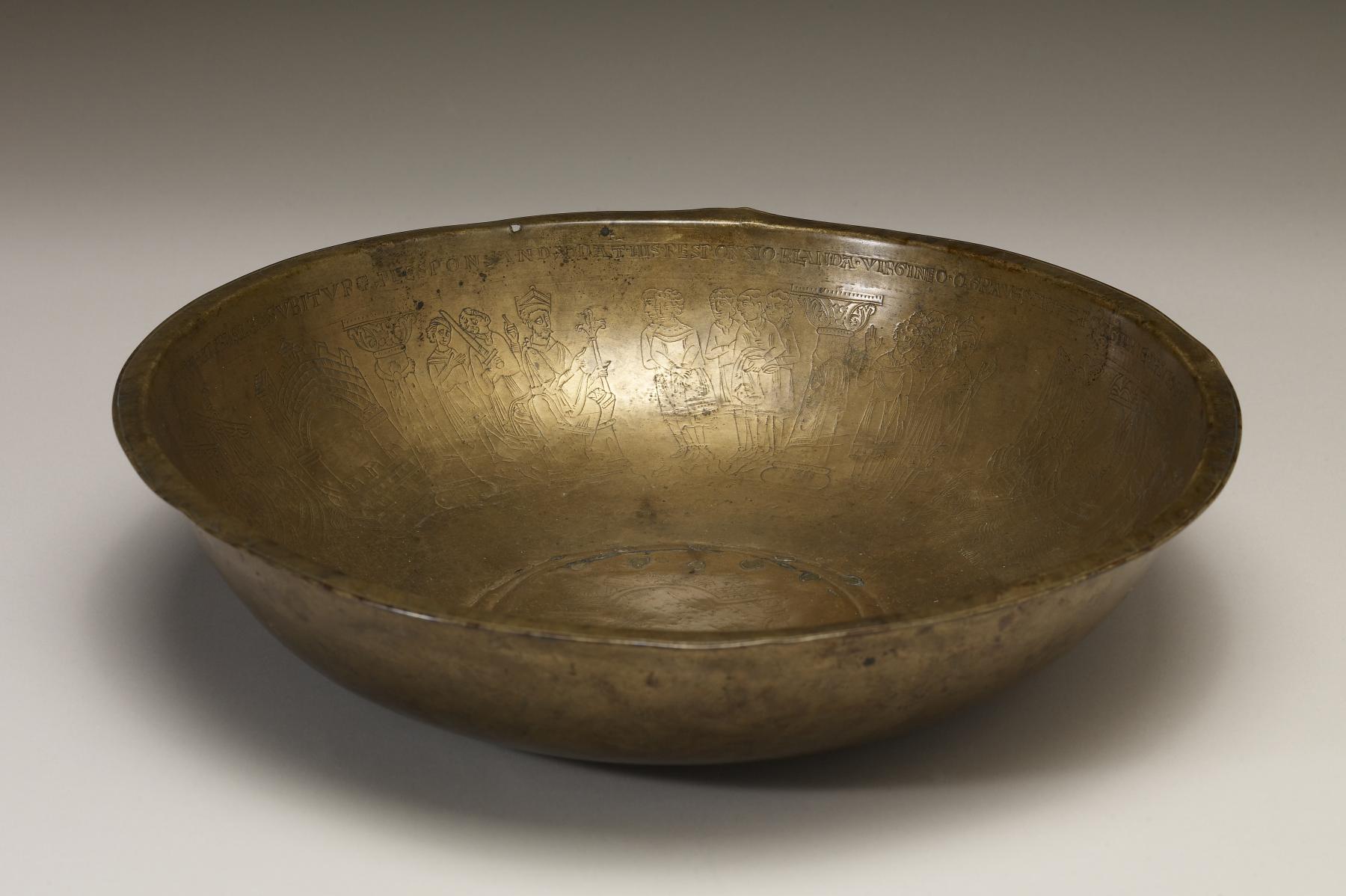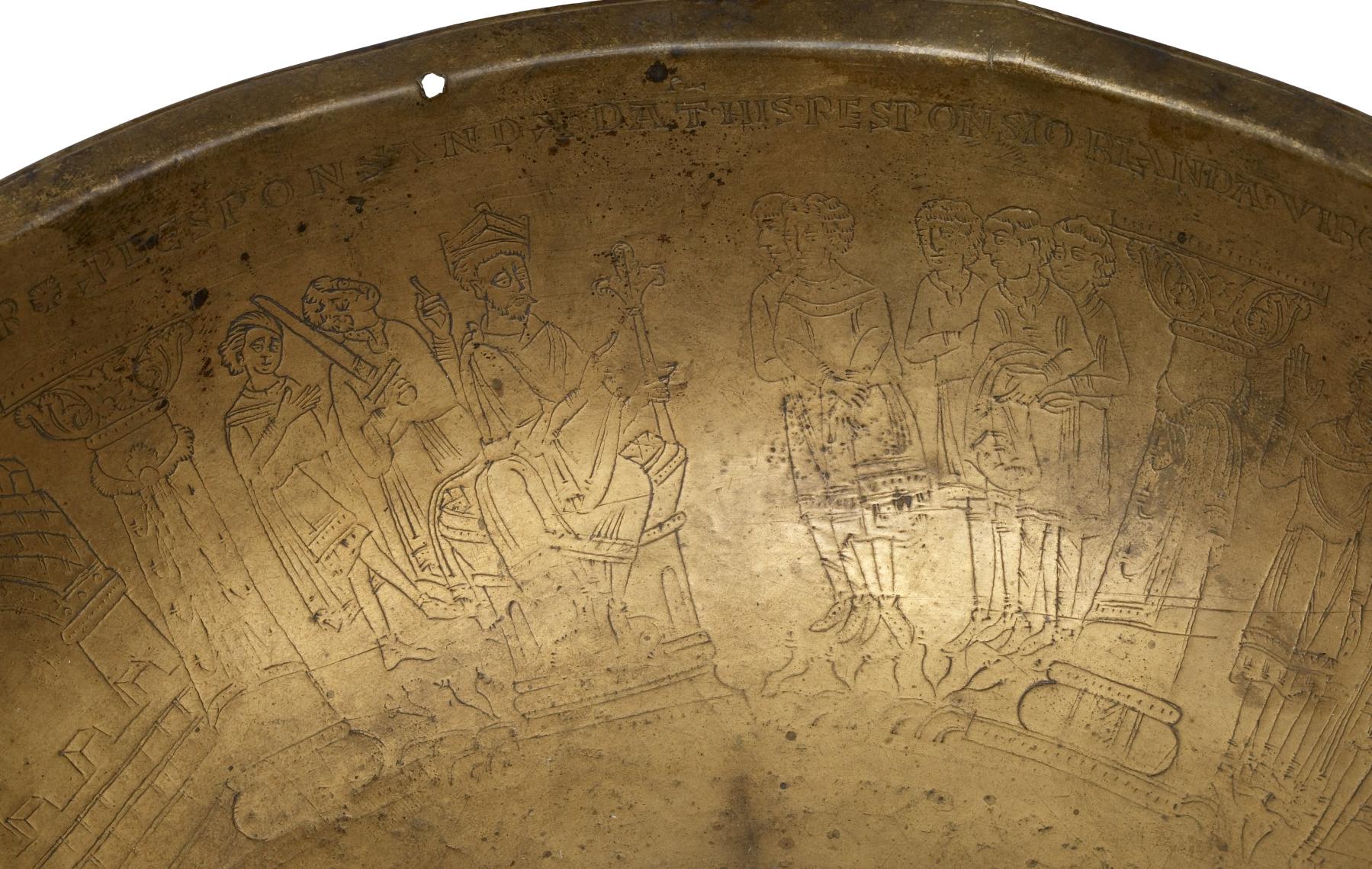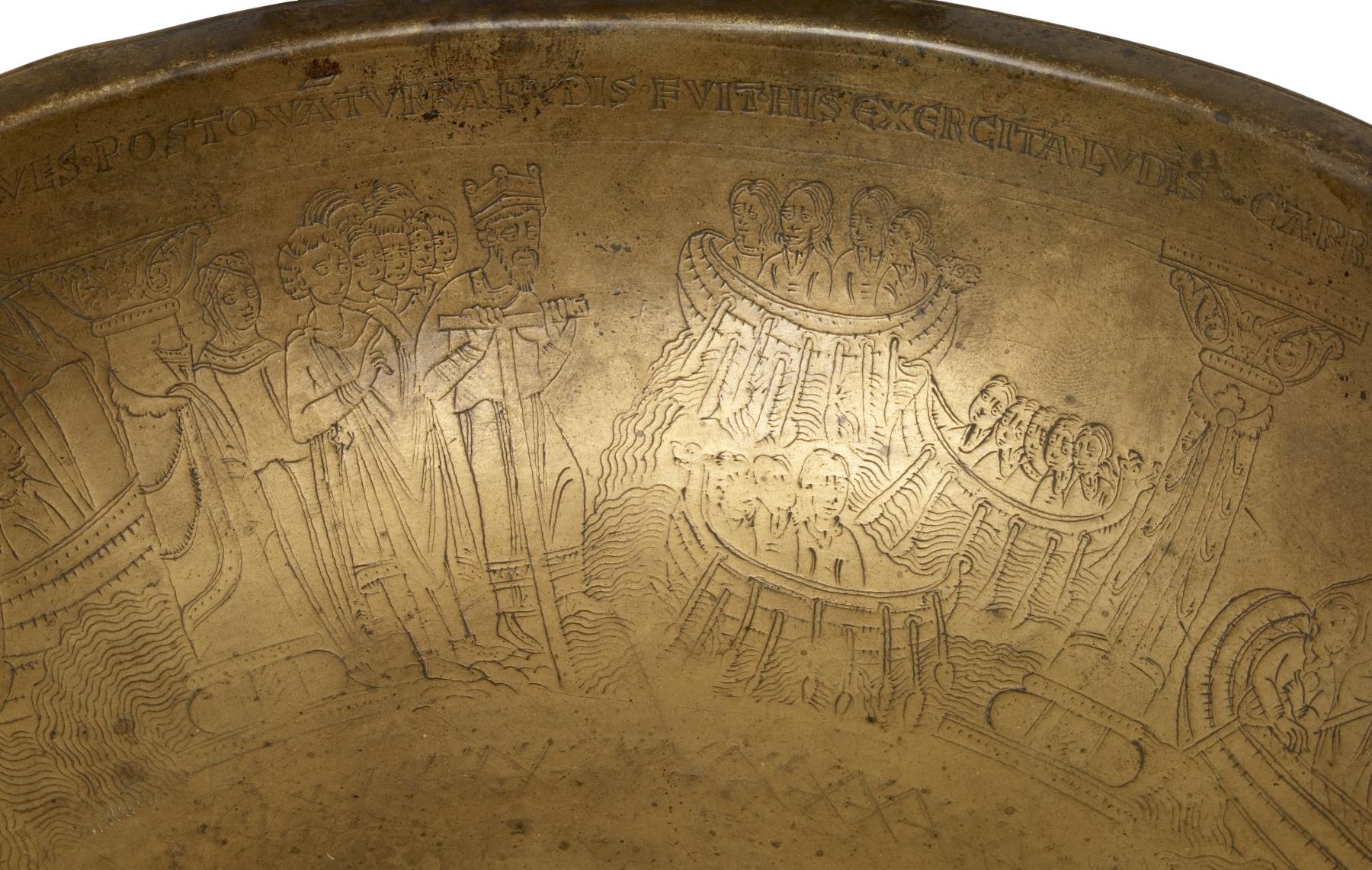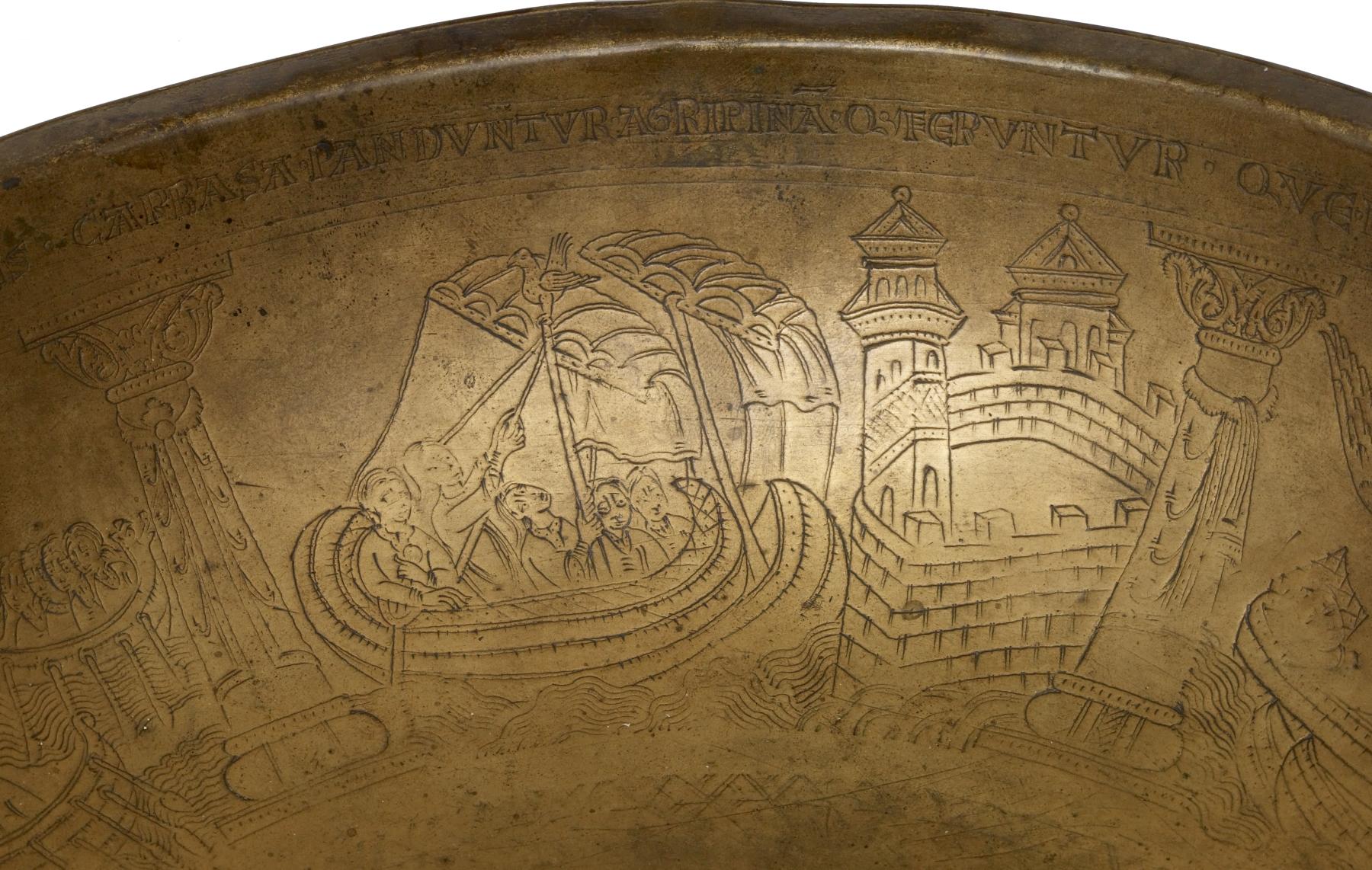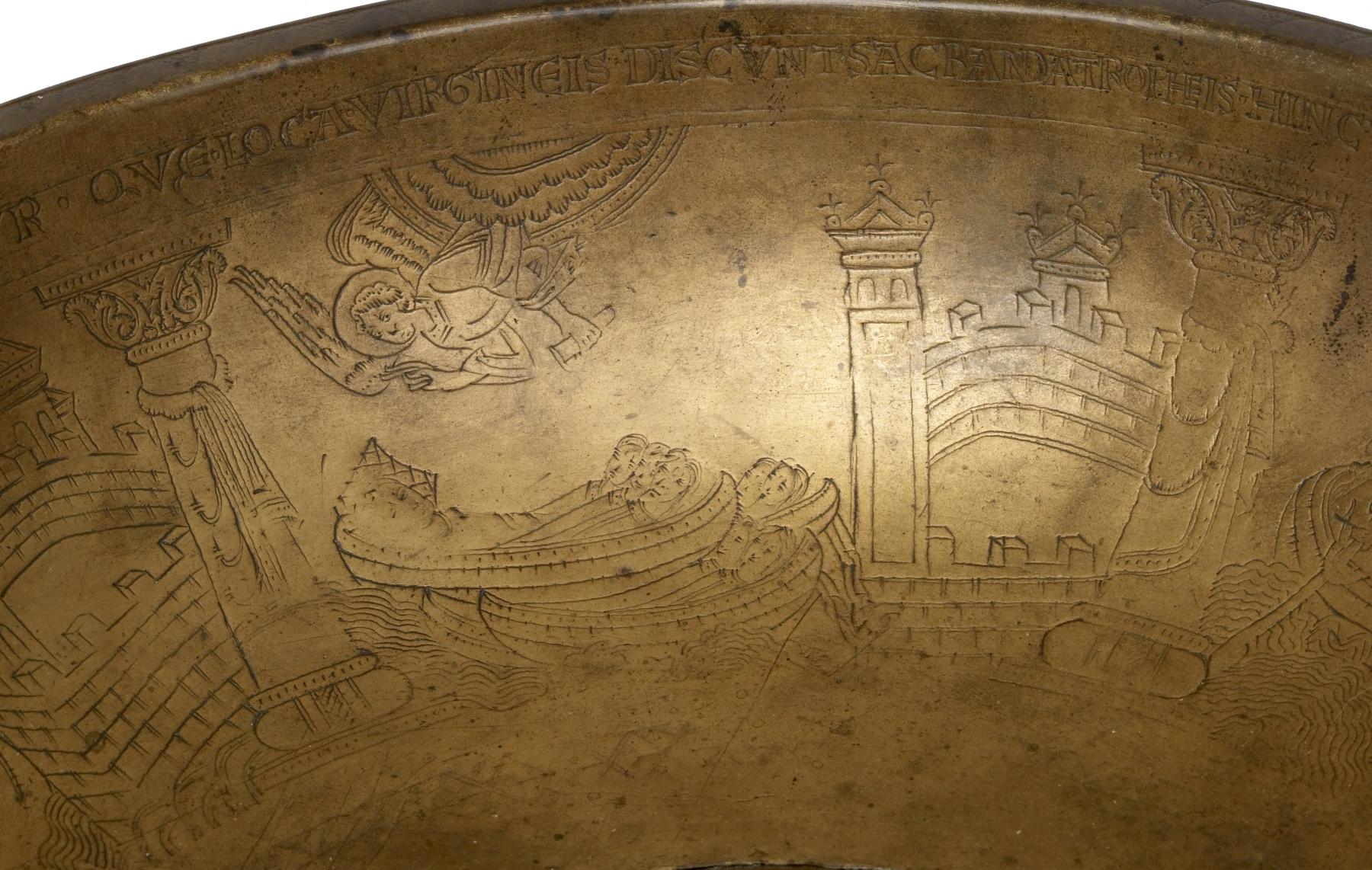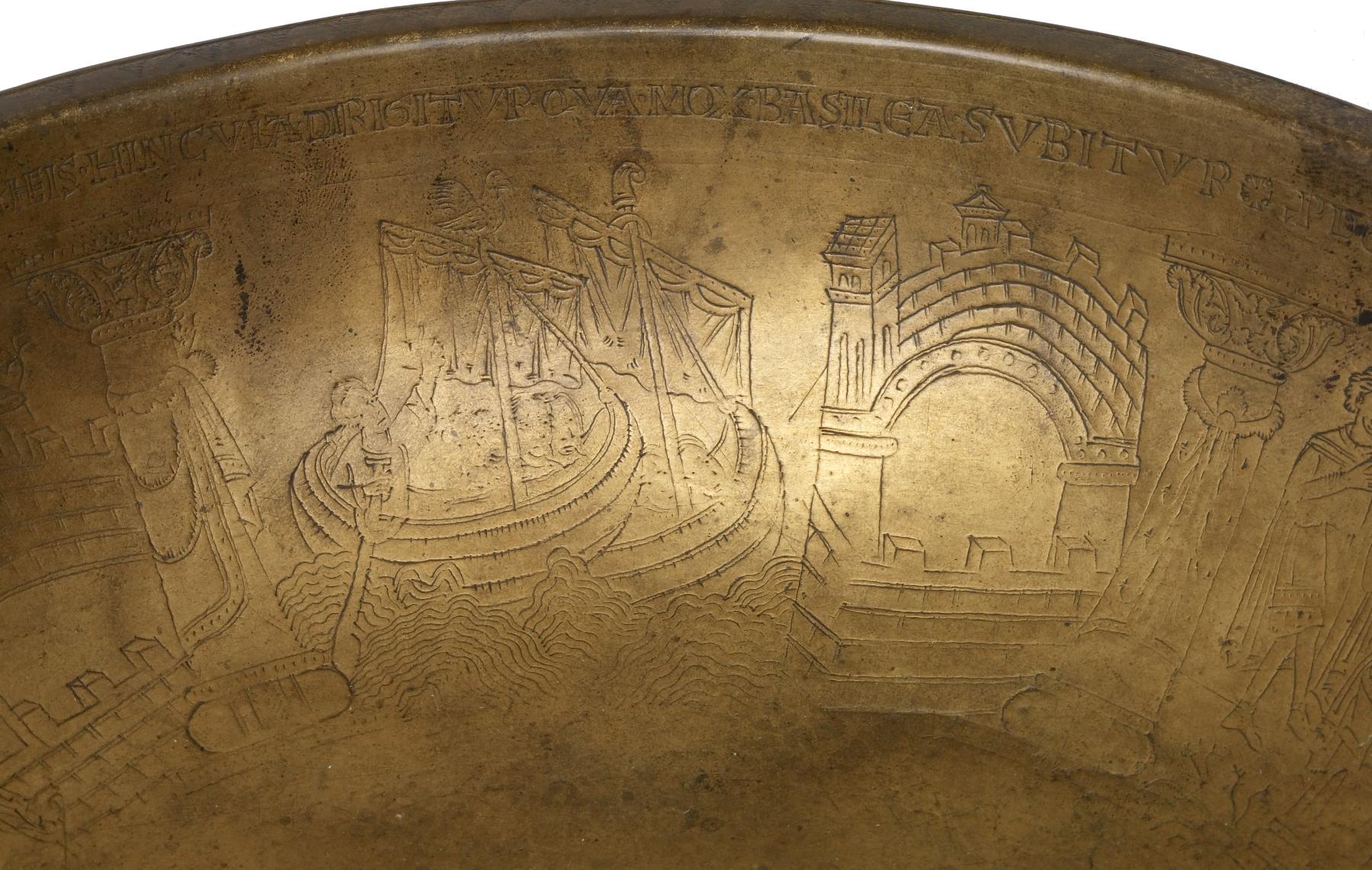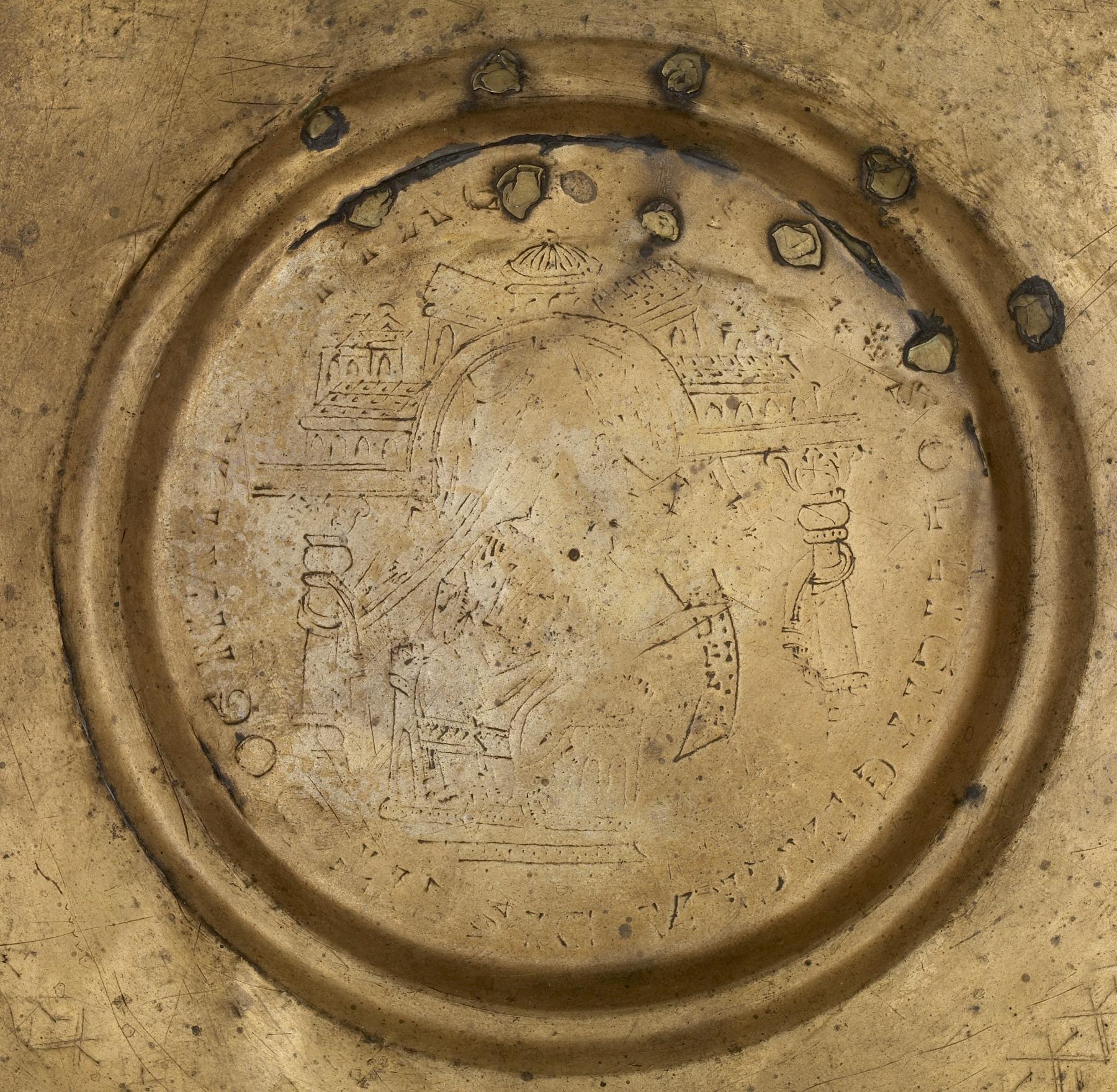Bowl with Scenes from the Legend of Saint Ursula
(Medieval Europe )
The narrative on this basin tells the story of Saint Ursula and her 11,000 companions, who embarked on a pious journey from England to the Continent only to be met by the Huns in Cologne and slaughtered in 383 CE. Ursula was warned of her impending doom, according to the legend, but willingly accepted martyrdom to join the kingdom of heaven. The narrative is executed in a simple, engaging manner. The movement of Ursula and her companions is echoed in the narrative progression around the bowl as one turns it to follow the story. The kinetic dimension of the display would likely have made this manner of recounting the saint's legend more memorable than simple recitation. Indeed, some scholars have suggested that bronze vessels of this type might have been used for teaching, while others maintain that they might have played a role in liturgical hand-washing performed by nuns. In the latter instance, the swirling ocean crossed by Ursula must have looked quite realistic when seen through the rippling water that filled the bowl.
Inscription
Provenance
Provenance (from the French provenir, 'to come from/forth') is the chronology of the ownership, custody, or location of a historical object. Learn more about provenance at the Walters.
Signol; M.E.G. Reidy Sale, London, July 19, 1929; Bacri, Paris; Léon Gruel, Paris; Henry Walters, Baltimore, by purchase; Walters Art Museum, 1931, by bequest.
Geographies
Germany (Place of Origin)
Measurements
H: 2 9/16 x Diam: 11 5/16 in. (6.5 x 28.7 cm)
Credit Line
Acquired by Henry Walters
Location in Museum
Centre Street: Third Floor: Migration and Early Medieval Art
Accession Number
In libraries, galleries, museums, and archives, an accession number is a unique identifier assigned to each object in the collection.
In libraries, galleries, museums, and archives, an accession number is a unique identifier assigned to each object in the collection.
53.69

